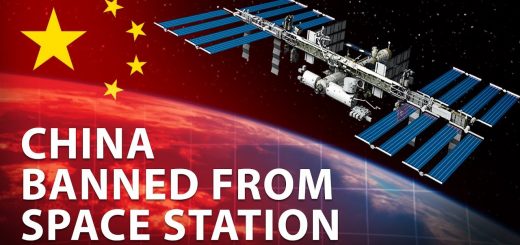Europe’s Spaceport in French Guiana
Hello and welcome to Europe’s Spaceportin Kourou, French Guiana. This is the last stop for many missionsbefore going into space,but it’s also the place wherethe result of international cooperationand technological advancescome together to ensureEurope’s independent access to space. This is French Guiana:an overseas department of Francein South America. Here, you find tropical climate,dense rainforests, extensive beachesand the occasional controlled explosion. Owing to its nearness to the equator,this is an ideal geographical locationfor launching satellites into any orbit. In addition, there’s no riskof cyclones or earthquakes. While the Spaceport serves clientsfrom across the globe,it is under the responsibility ofthe French Space Agency – CNES -and infrastructures are funded bythe European Space Agency. Within CNES, we operate the launch base,we make sure that the launch can bedone in full security, full safety. We provide our support to Arianespaceas launch service providerand we take care of all the infrastructureof this launch base. Not only is this the sitewhere satellites come to be launched,it’s where some ofthe rocket boosters are prepared. Boosters provide most ofthe thrust at liftoff. Filling them with fuelinvolves the careful processof mixing and castinghighly explosive material,all under vigilant supervision. Once prepared, the boosters arestored upside down. The ones we see hereare for the Ariane 5 rocket. Each section is standingabout 10 metres tallto make up a single 30 metre booster. The next step is toassemble the rocket stages,which has traditionally beendone vertically. But, for the development of Ariane 6,new buildings have been designedfor horizontal assembly,which saves time and money. We are now beginningthe transition next yearbetween Ariane 5 and Ariane 6. We hope in three yearsto finish the exploitation of Ariane 5and to have a full operational capacityon Ariane 6. Soyuz will remain accessibleif necessary in case ofopportunities on the commercial market. Ariane 6 isEurope’s new launch vehicle,capable of carrying a wide rangeof missions into orbit. This new rocket requiresa unique launch zonecomplete with its own assembly building,90 metre tall mobile gantryand massive launch pad. The next important goalis to put together – let’s say -the launch pad and the launcherduring the combined test and, just after,to perform the maiden flightof Ariane 6 in 2020. The teams at the Spaceportare also preparing for Vega-C:the next generation ofthe small Vega launcher,capable of placingmultiple payloads into orbit. The main difference betweenVega and Vega-Cis the first two stages. So, the launcher, it will be heavyand longer to be much more powerfulto be able to send orbitsatellites heavier and bigger. To provide the extra powerto both Vega-C and Ariane 6to launch heavier satellites,a new solid rocket motor,called P120C, has been developed. Here we see one fully loaded with142 tonnes of fuel configured for Vega-C. It was static firedat the Spaceport test standfor a final simulation of liftoffand the first phase of flight. While preparations continuefor these new rockets,the Spaceport remains operationalwith multiple launch campaignsthroughout the yearto bring satellites into space. It’s a very fluid environment. And, what people have to remember isthat even though we doa lot of launch campaignsand we launch a lot of satellites,every satellite is differentand every launch campaign is different. So, you can never saythis is really standard. There’s no such thing asa normal day in the office Control centres, clean roomsand launcher assembly halls are a far cryfrom a normal office environmentand come with an element of risk,but the employees of the Spaceporttake extra precautionsto minimise these risksevery step of the way,even after a rocket has left the ground. We are able to makea precise localisation of the launcherand, in case of danger,we are able to destroy the launcherin order to make sure that nobody herein Guiana may be affected by this failure. Since the 1960s,the Spaceport has providedindependent access to space for Europeand continues to be forward-looking. It’s time now to do a new stepin modernisation of the launch base,in particular, to accompany the initiationof the Ariane 6 and Vega-C launches. So, that’s what we are preparing nowwith the support of our colleagues in ESAhere in Kourou and in Paris. And, that’s where we prepare. The future will be thento operate Ariane 6 and Vega-Cand to offer the same level ofhigh-level services to our customers,and maybe also towardsthe new operators. As you know, there are a lot ofnew initiatives in the field ofmicro mini launchersand Kourou could be the launch base. Looking to the futureis not only about advances intechnology and engineering,but new expertise. It’s up to the next generationof professionalsto continue the legacy ofEuropean cooperation in space. We really try to encourage:a. young Europeans to come and visit& b. young Europeans to come and work,because it’s an extremelyexciting place to be. For more on Europe’s Spaceportin French Guiana,you can visit our website atwww. esa. int. I’m Kelsea Brennan-Wessels,thanks for watching.













